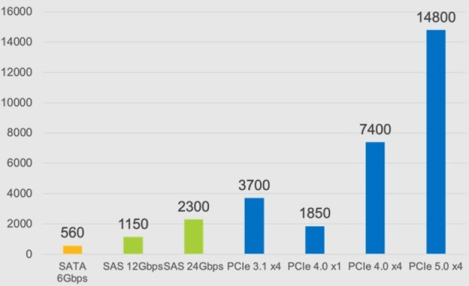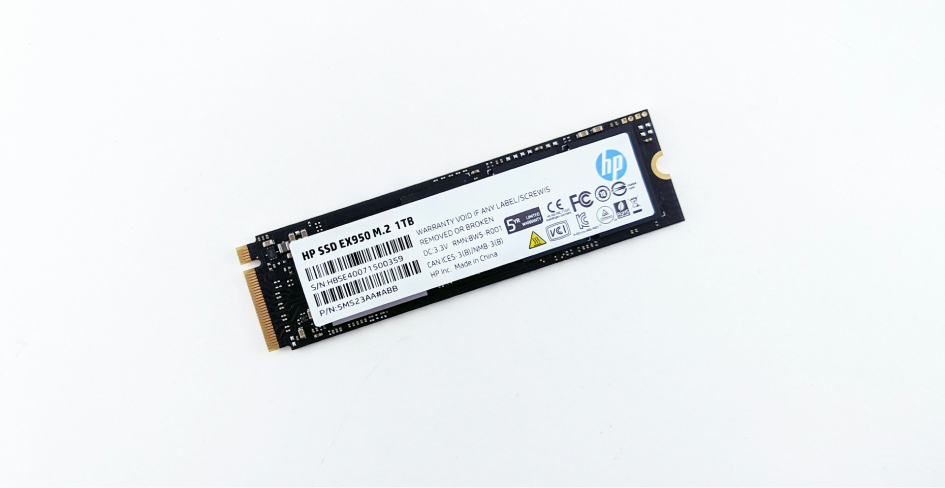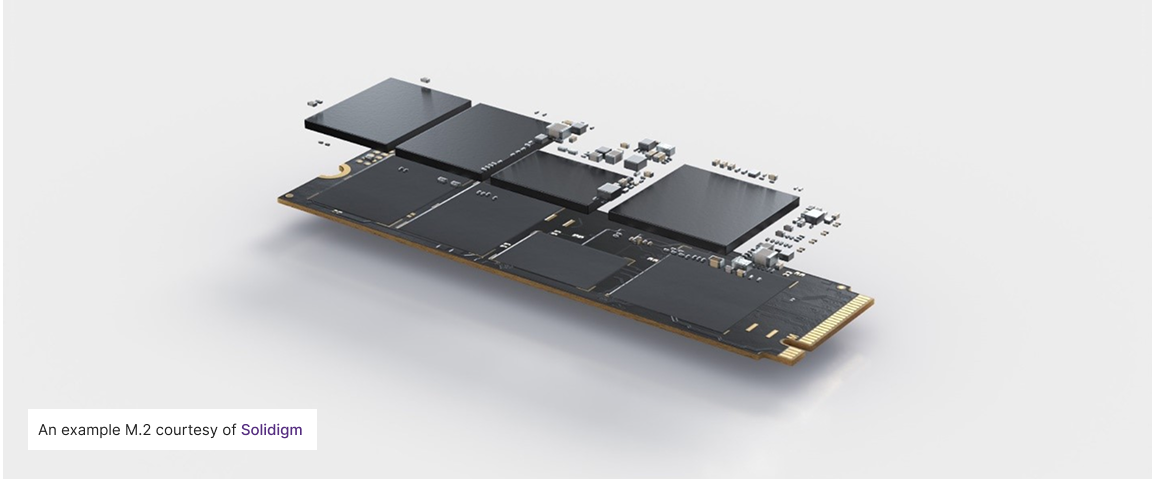Overview
A solid-state drive (SSD) is a device for storing data on non-volatile memory. SSDs have no moving parts and are known to be smaller, more reliable, often have lower power consumption, and have typically have much higher input/output performance than hard disk drives (HDDs).
The overwhelming majority of SSDs today use NAND flash as the non-volatile memory to store data. NAND memory is stacked into packages and connected to a controller across various channels to improve performance.
SSDs come in multiple capacities, media types, interfaces, form factors, and segments to address the large market for data storage.
Media - Non-Volatile Memory
The media used in an SSD refers to the type of non-volatile memory that stores data. The most common type of media used in consumer-grade SSDs is NAND flash memory, which is made up of millions of transistors that can be programmed in pages and erased in blocks. NAND is used because of its high performance and low cost, thanks to the scale and capacity of manufacturing. NAND flash comes in packages which are stacks of dies. NAND is programmed in pages and erased in blocks that contain many pages. NAND memory cells (cell) store bits of data.
A single cell can store a single bit (SLC), two bits (MLC), three bits (TLC), four bits (QLC), or five bits (PLC). Storing more bits per cell typically reduces endurance and performance. The majority of SSDs today use TLC and QLC NAND, given the cost advantages of storing more bits in the same physical NAND cell. An SSD controller reads data from and writes data to the NAND and transfers data over an interface with a host.
Storage Interface
The storage interface refers to how the SSD communicates with the host, containing different layers such as physical layer, link layer, and protocol layer. Standard storage interfaces today are NVMe®, SATA, and SAS. NVMe is the most common standard for SSDs, while SATA and SAS SSDs are still around to support legacy compatibility with hard disk drives.
The storage interface refers to how the SSD communicates with the host, containing different layers such as physical layer, link layer, and protocol layer. Standard storage interfaces today are NVMe®, SATA, and SAS. NVMe is the most common standard for SSDs, while SATA and SAS SSDs are still around to support legacy compatibility with hard disk drives.
 Maximum Interface Speed Comparison (MB/s)
Maximum Interface Speed Comparison (MB/s)Form Factors
Form factors describes the shape and compatibility of an SSD. Form factors dictate the physical characteristics and constraints, such as capacity, controller, power, and power loss protection. M.2 is the most popular form factor for laptops and desktop, U.2 for enterprise servers, and AIC (add-in-card) for standard PCIe slots.
EDSFF offers a dynamic range of form factors that have advantages vs the incumbent SSD form factors in capacity, scalability, performance, serviceability, manageability, thermal and power management. The SNIA Solid State Drive Form Factors page provides additional information.
Consumer SSDs
Many SSDs are developed for consumer devices such as laptops, desktops, workstations, and tablets. Consumers value good battery life, which drives power efficiency, especially in the idle power states, as well as application responsiveness (latency and performance), small physical size, low to medium capacity points, and low cost.
Consumer workloads tend to be very bursty (e.g., moving large files, installing a game or application), and leave the drive idle most of the time, allowing consumer SSD firmware and drives tuned to this workload profile. Consumer SSDs often employ an SLC cache in front of TLC or QLC media, allowing even small-capacity drives to have very high performance before the cache gets filled up. Consumer workloads generally do not write a lot of data making these drives a good fit for media with lower endurance.
Data Center and Enterprise SSDs
Data center and enterprise SSDs are now the largest market segment for SSDs, with cloud data centers consuming over half of all demand. These SSDs usually have additional reliability, management, and data protection features.
They tend to be higher capacity, have higher endurance, and features like power loss protection. You can see the difference between these types of SSDs in the SNIA NVMe SSD Classification White Paper.
Endurance
SSDs have finite endurance, or the amount of data you can write to the SSD before the device wears out and can no longer store data safely. The SSD industry uses the term endurance, but it is also referred to as SSD life or SSD wear out. SSD vendors generally specify this in two ways, TBW (terabytes written) or DWPD (drive writes per day) which is supposed to be an easy metric of how much you can write to the device every day of the warranty period. SSD endurance will vary greatly from what the SSD vendor specifies due to the dependency on the workload (random write vs sequential write, large block size vs small) and as a function of free space or “overprovisioning” on the SSD.
Mainstream SSD firmware uses that free space for garbage collection, and can mark used LBAs free again with a “TRIM” command. The most important thing is that endurance can be accurately measured and estimated with a few simple equations. Datacenter drives often have petabytes written before they wear out, whereas consumer drives have only a few hundred TBW (terabytes written) before they wear out. The SNIA Endurance of NVMe, SAS, and SATA SSDs White Paper provides more information.
SSD workloads and performance
SSDs have extremely high performance. An SSD controller can read from multiple NAND simultaneously over many channels, parallelizing the performance. The SSD and the host only communicate in logical blocks (LBAs). Workloads (e.g. database, HPC, VDI) expressed to the SSD are often described by the following attributes.
Performance drops significantly when the drive gets full. SSD performance is very nuanced, since the performance of an SSD varies greatly by workload. SSD performance varies depending on how full the drive is as a function of “spare area” for garbage collection in the SSD and different caching algorithms. Performance of consumer SSDs is measured when the drive is empty. Performance of data center and enterprise SSDs is measured when the drive is full (worst case). A common performance measurement can be determined by using the procedures defined in the SNIA Solid State Storage Performance Test Specification.









